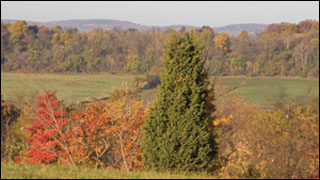|
By the Numbers

58. PERCENTAGE OF THE BAY WATERSHED THAT IS FORESTED. While a significant improvement from the turn of the 20th century when logging and agriculture left forests a ghost of their pre-colonial past, this is still a long way from the 70 percent forest cover that some scientists think is needed for a healthy Bay.
100. Estimated number of forest acres lost per day in the watershed since the mid-1980s. Some experts believe the actual number may be even higher. And natural resource managers are concerned that despite the slumped economy, developers stand poised to ramp up once the real estate market bounces back.
7.32 million. Acres of land preserved in the Chesapeake Bay watershed as of 2008. This surpassed the Chesapeake 2000 Agreement's goal of 6.8 million acres or 20 percent of the watershed by 2010. This is not all forestland.
70-80. Approximate percentage of preserved land that is forested. A concrete number is hard to come by given that data on preserved land are not easily broken down by land cover. Additionally, some forests on military land are considered "protected" although they could be converted to other uses.
695,000. Additional acres of forestland the Bay states have committed to preserving in the watershed by 2020 as part of the Forest Conservation Initiative. The goal targets so-called "high-value forests" — those with the greatest influence on water quality.
42,551. Acres of forest preserved in 2008 toward the Forest Conservation Initiative goal — though the Chesapeake Bay Program notes that most of this is not high-value forest.
10,000. New goal for miles of forest buffers planted by 2010.The original goal was 2010 miles by 2010, reached far ahead of schedule. Experts predict the states will fall short of this new goal by approximately 2,000 miles. And buffers planted does not necessarily equal buffers protected. Riparian forest managers worry they could be losing buffers as fast as they are planting them.
6,172. Miles of forest buffers planted along streams since 1996. A buffer must be at least 35 feet wide to count toward this goal, though buffers between 100 to 300 feet prove most effective for improving water quality.
— Jessica Smits
|